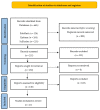Radioprotective Effects from Propolis: A Review
- PMID: 37570811
- PMCID: PMC10420827
- DOI: 10.3390/molecules28155842
Radioprotective Effects from Propolis: A Review
Abstract
Propolis is a natural bee-produced substance with antimicrobial, anti-inflammatory, and wound-healing properties, containing some components from the leaves, buds and resins of plants. It has been used for centuries for various health benefits. In this manuscript, our group reviewed the radioprotective effect of propolis using PubMed and Embase, and our review was conducted according to the PRISMA statement. Finally, 27 articles were included in this review, which includes the radioprotective effect of propolis from cell-based studies (n = 8), animal models (n = 14), and human trials (n = 5). Results reflected that the dosage forms of propolis extracted in the scientific literature were ethanolic extracts of propolis, a water-soluble derivate of propolis, or capsules. The efficacy of the radioprotective properties from propolis is extracted from the bibliography, as several compounds of this resinous mixture individually or synergistically are possible candidates that have the radioprotective effect. In fact, studies prior to 2011 lacked a comprehensive characterization of propolis due to the variability in active compounds among different batches of propolis and were limited to analytical techniques. Furthermore, in this manuscript, we have selected studies to include primarily propolis types from Brazil, Croatia, Egypt, European countries, and those commercialized in Spain. They all contained ethanolic extract of propolis (EEP) and were influenced by different dosage forms. EEP showed a significant presence of lipophilic bioactive compounds like flavones, flavonols, and flavanones.
Keywords: propolis; radiation; radioprotection.
Conflict of interest statement
The authors declare no conflict of interest.
Figures




References
-
- Simone-Finstrom M., Spivak M. Propolis and bee health: The natural history and significance of resin use by honey bees. Apidologie. 2010;41:295–311. doi: 10.1051/apido/2010016. - DOI
Publication types
MeSH terms
Substances
Grants and funding
LinkOut - more resources
Full Text Sources

